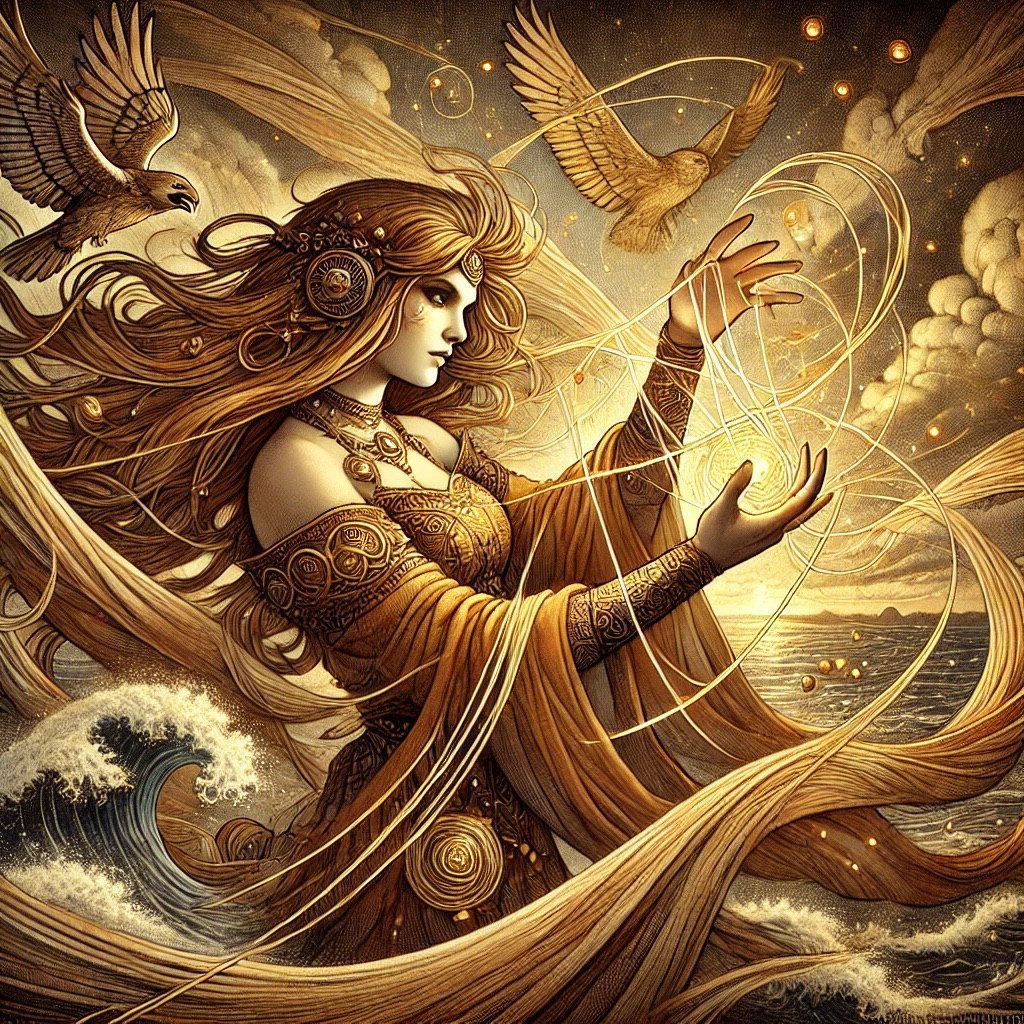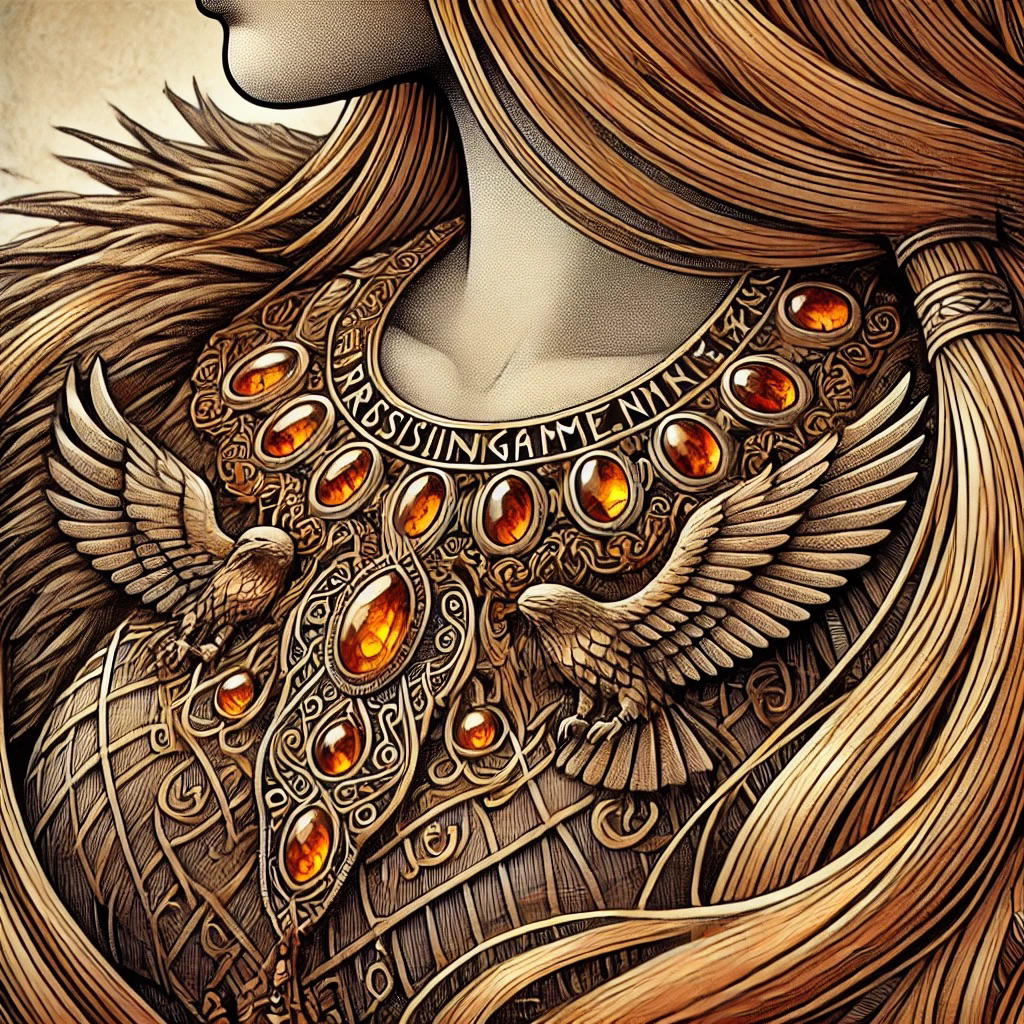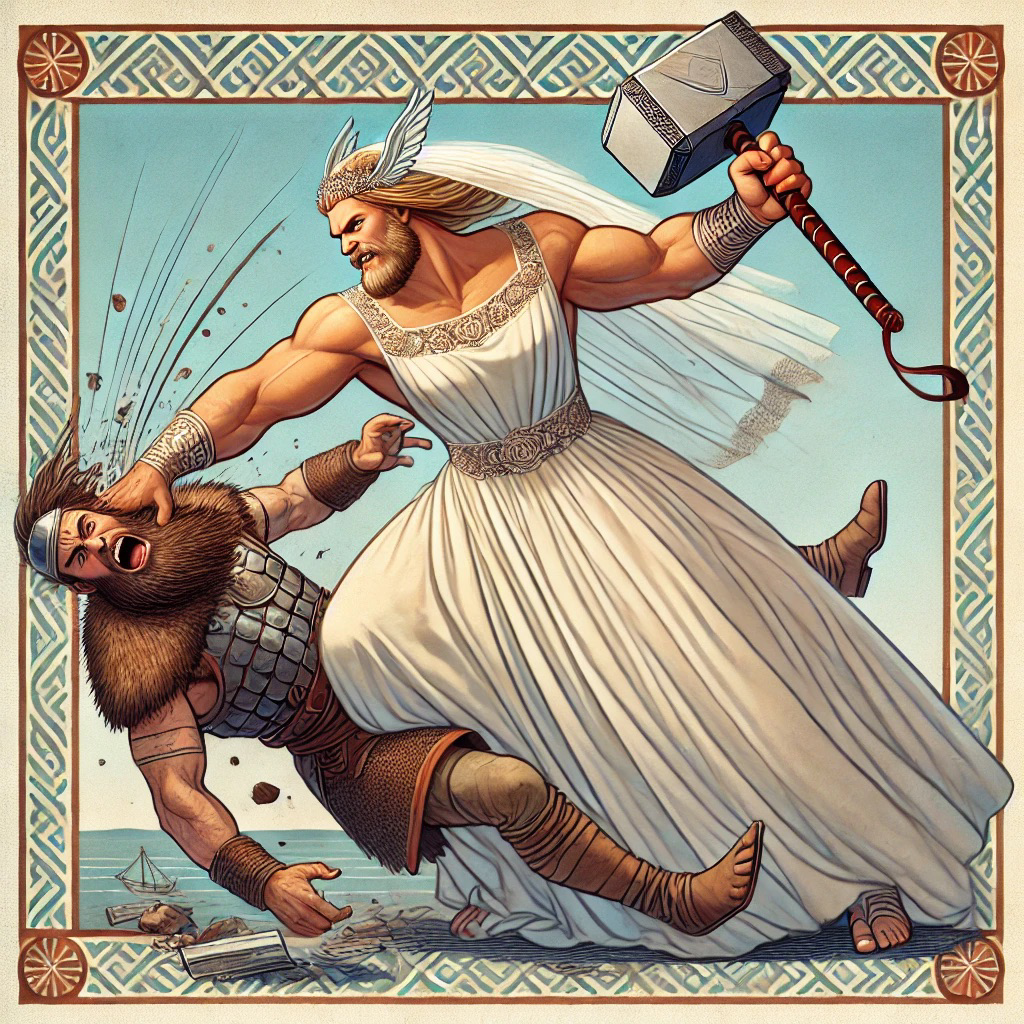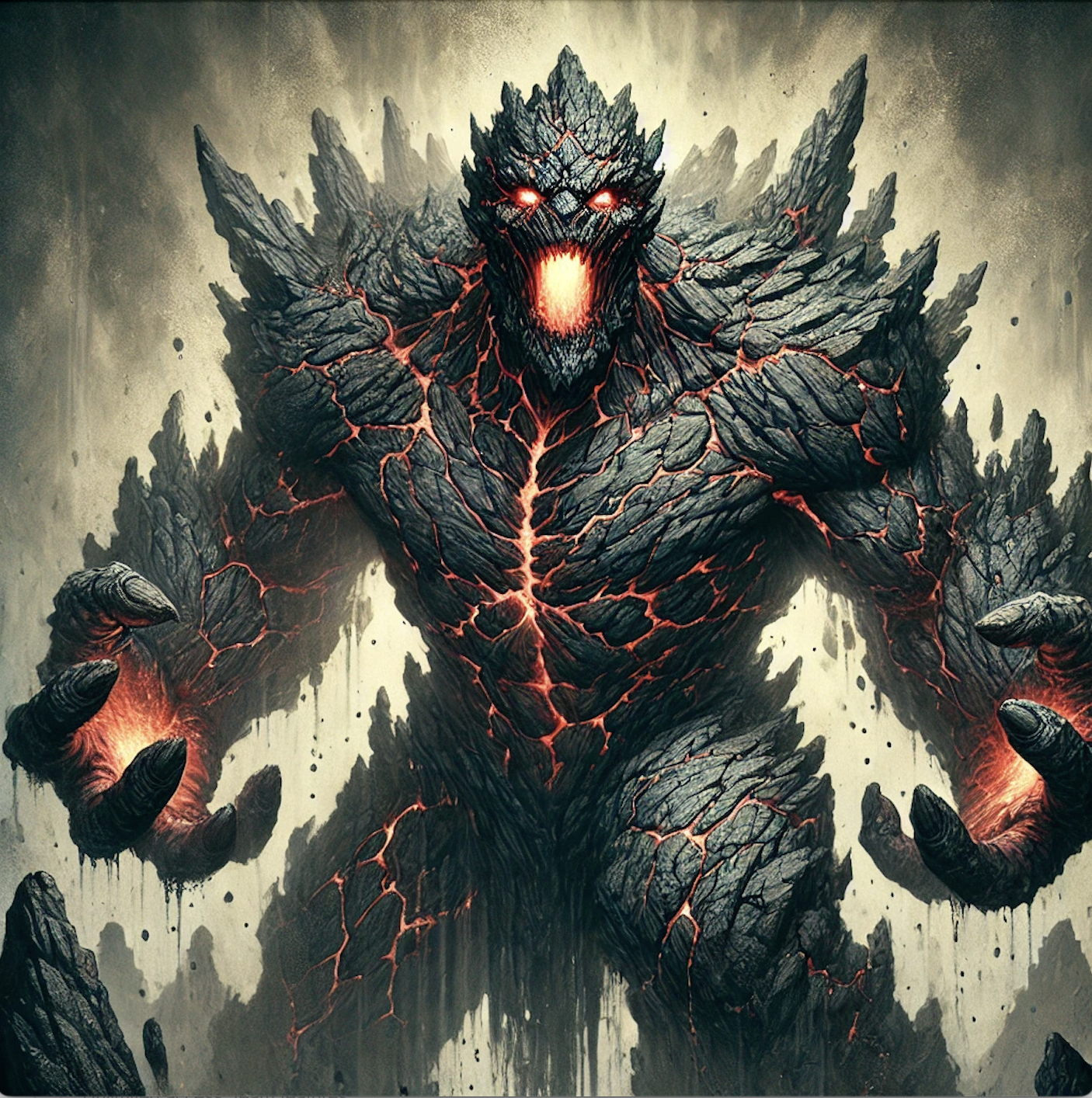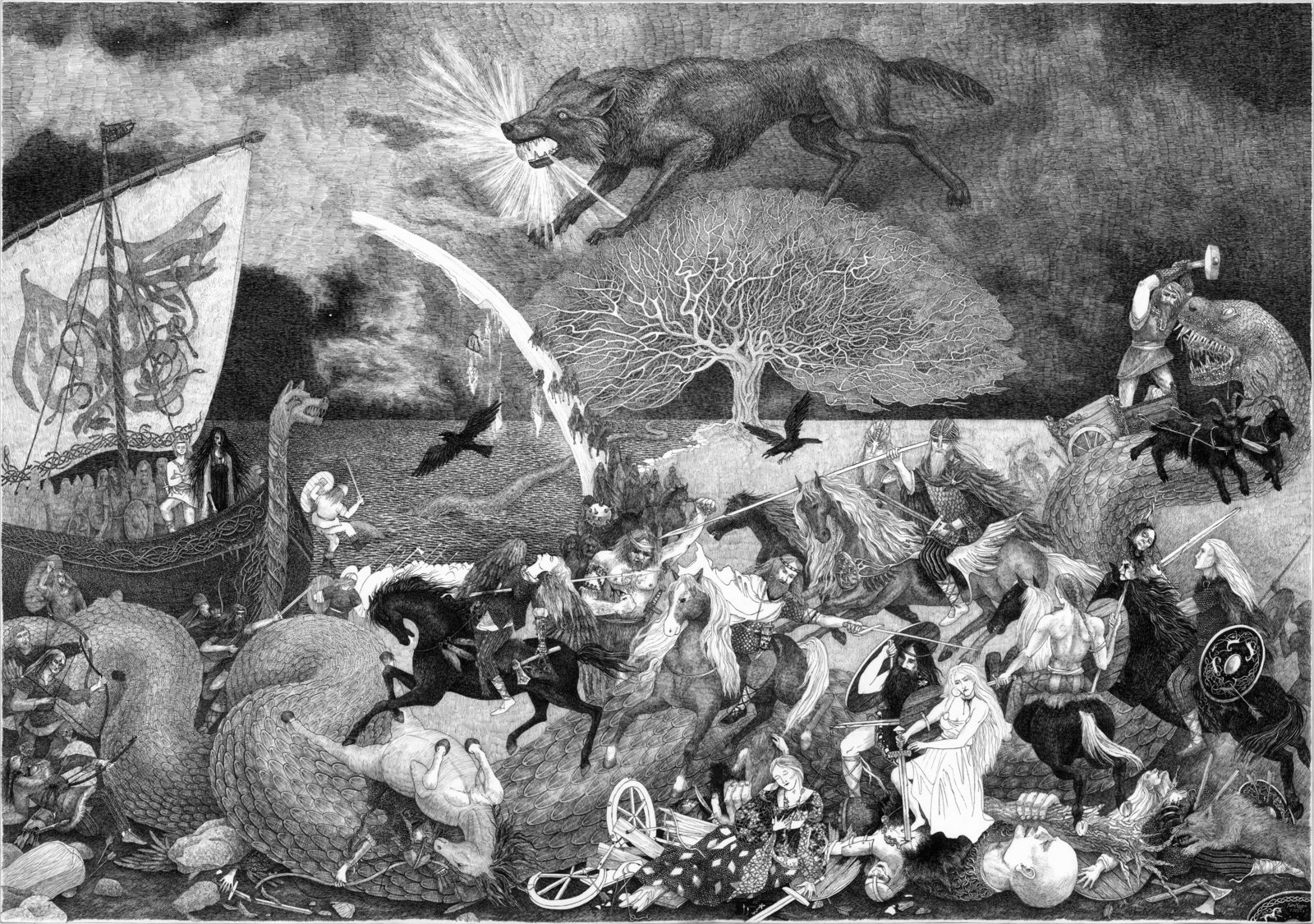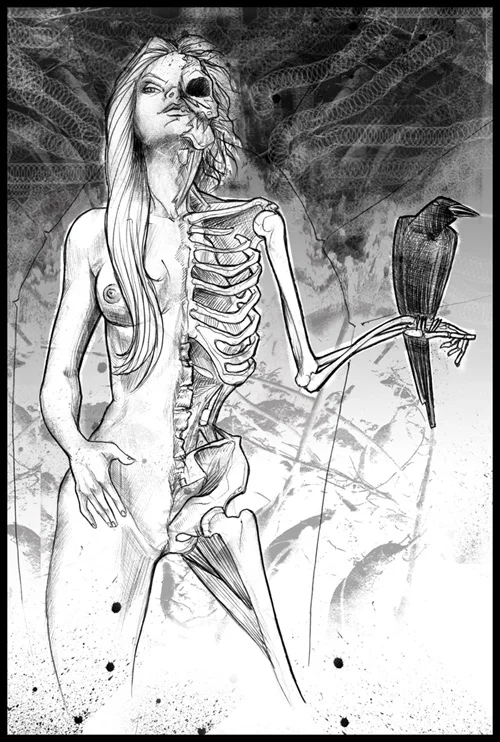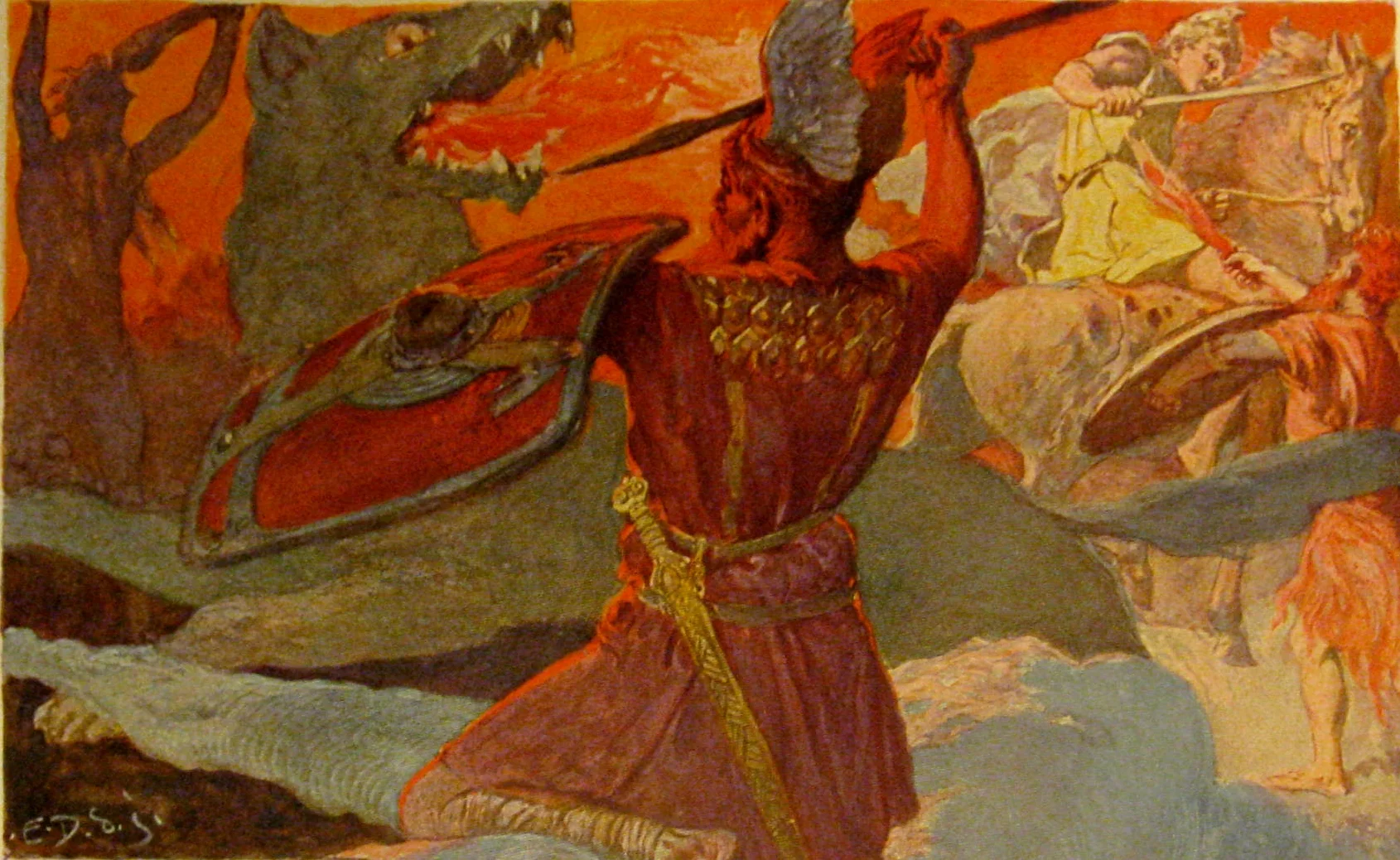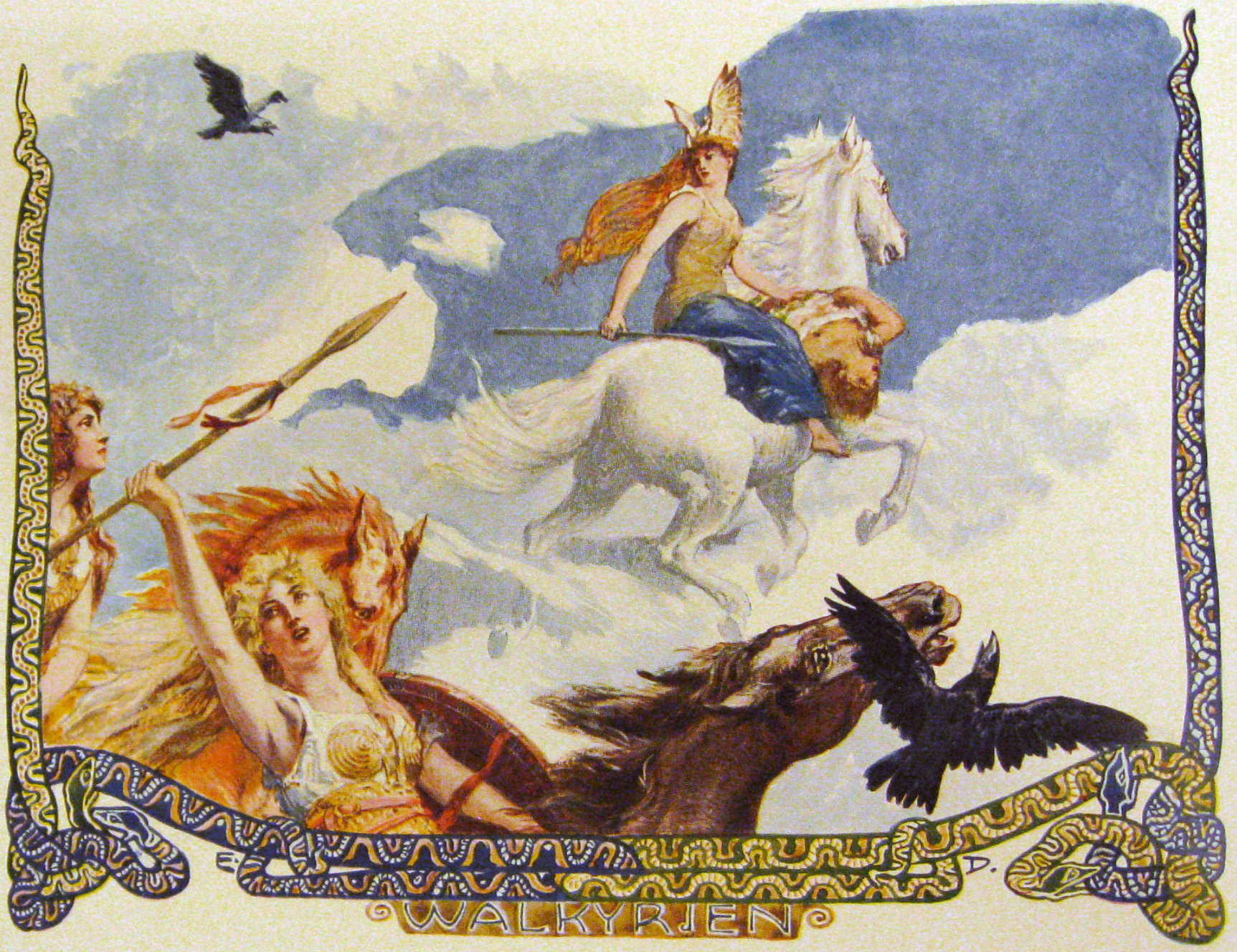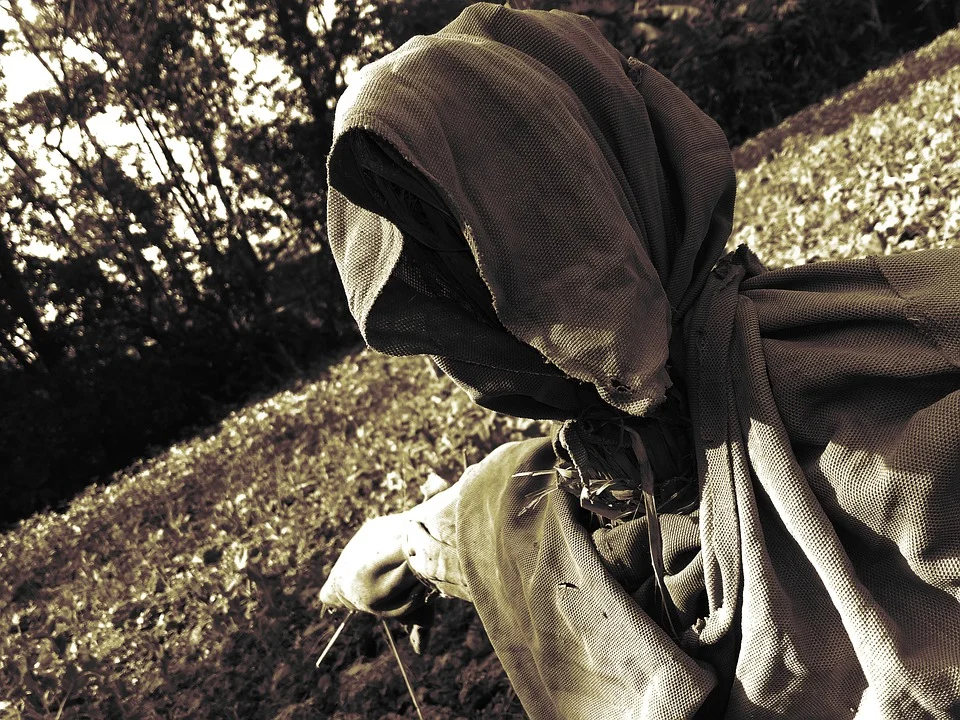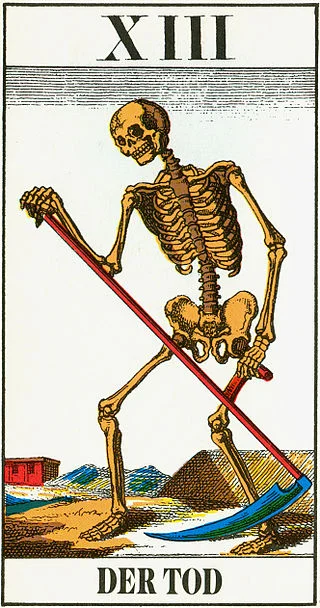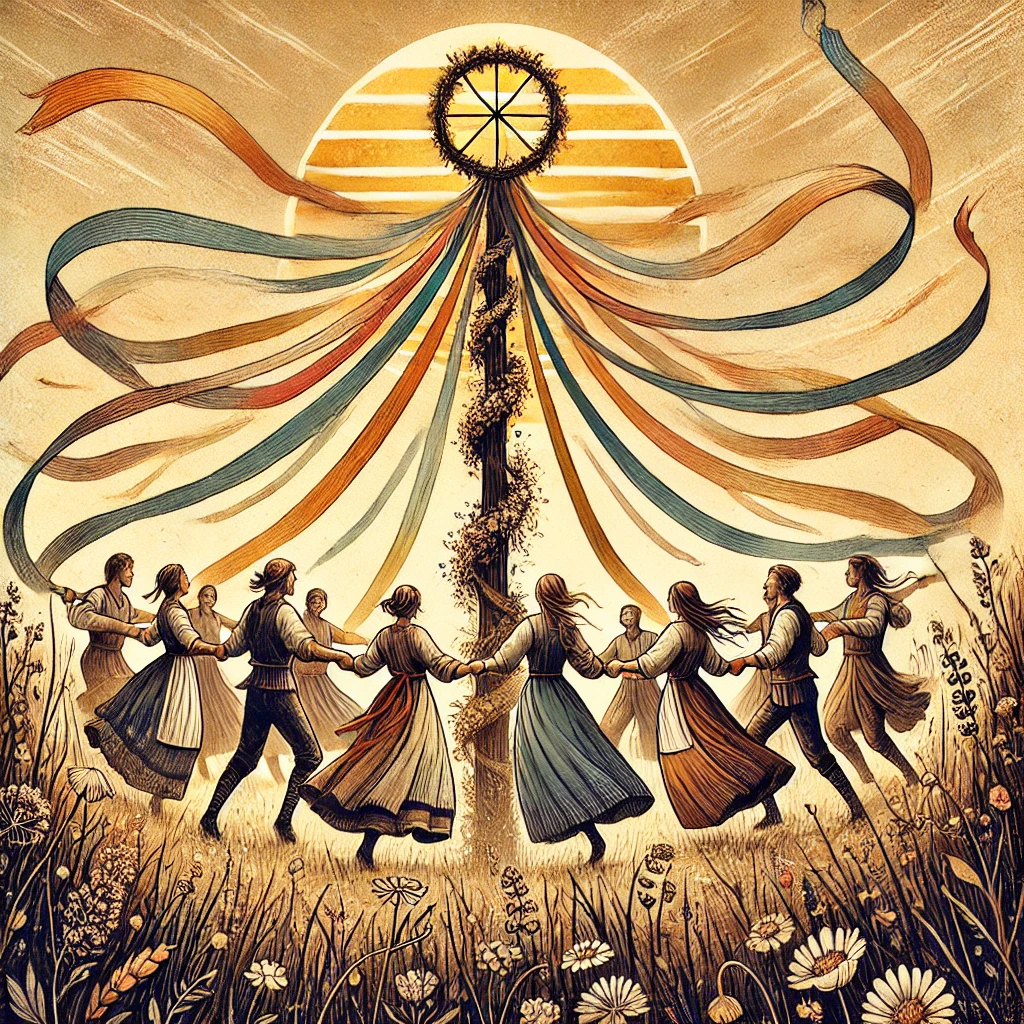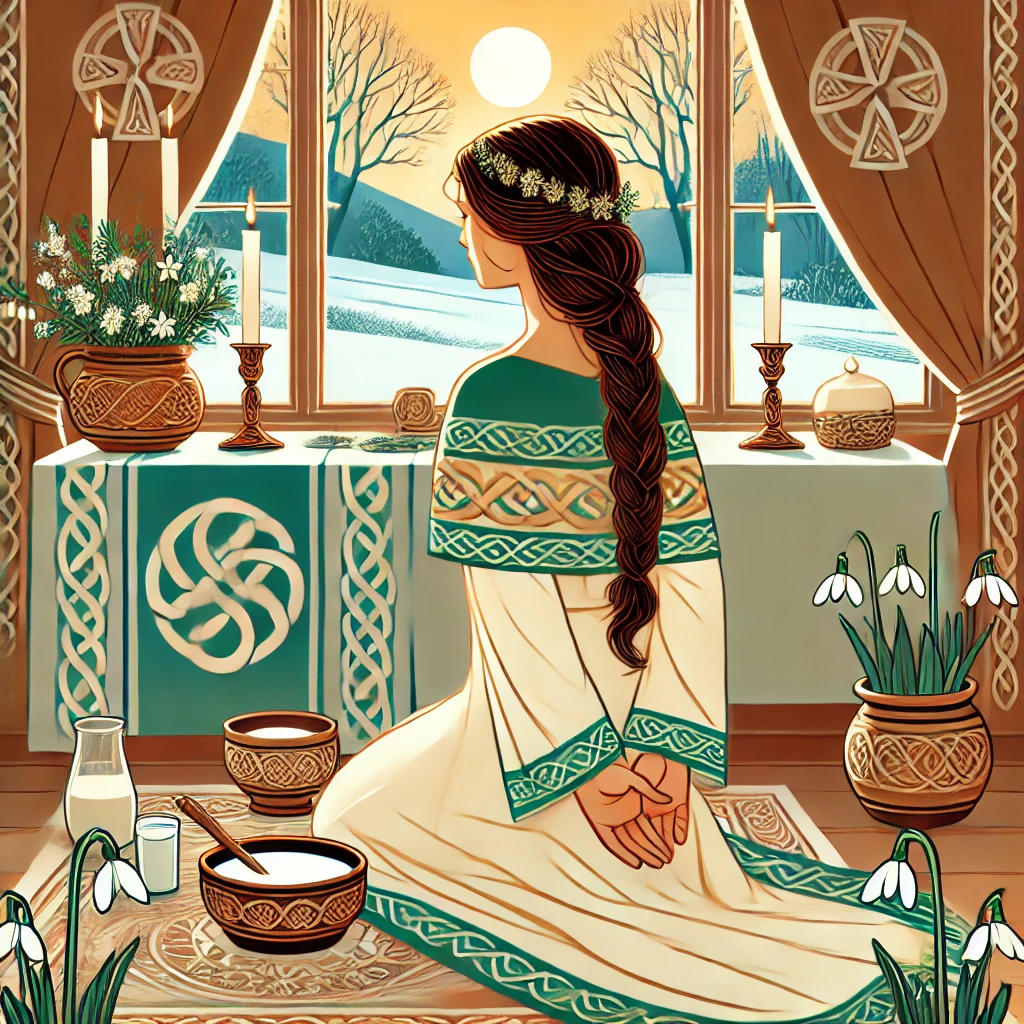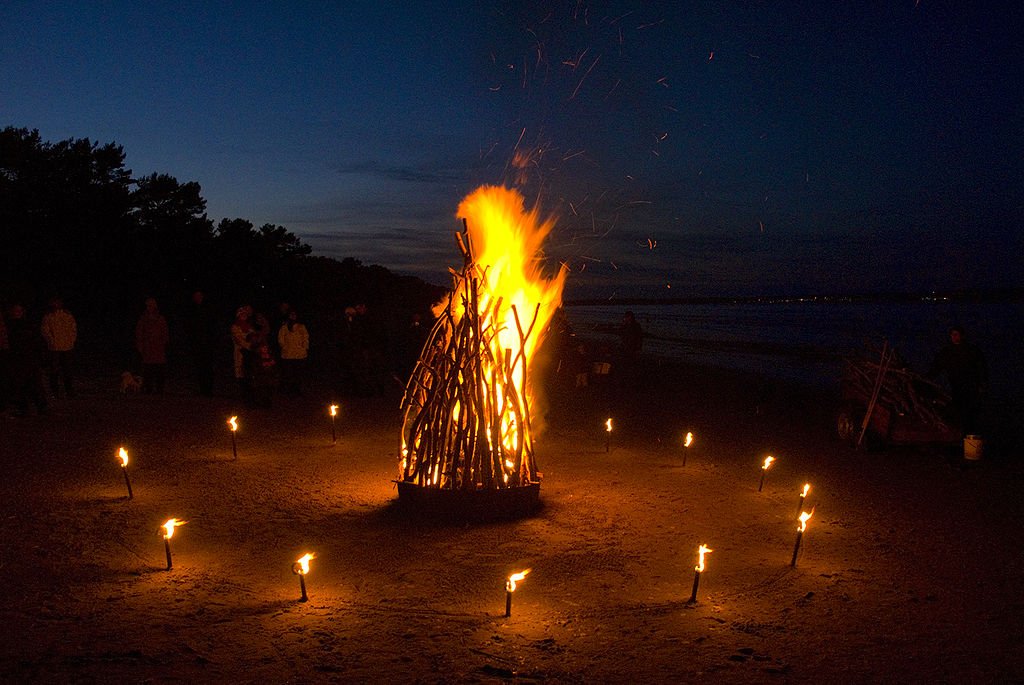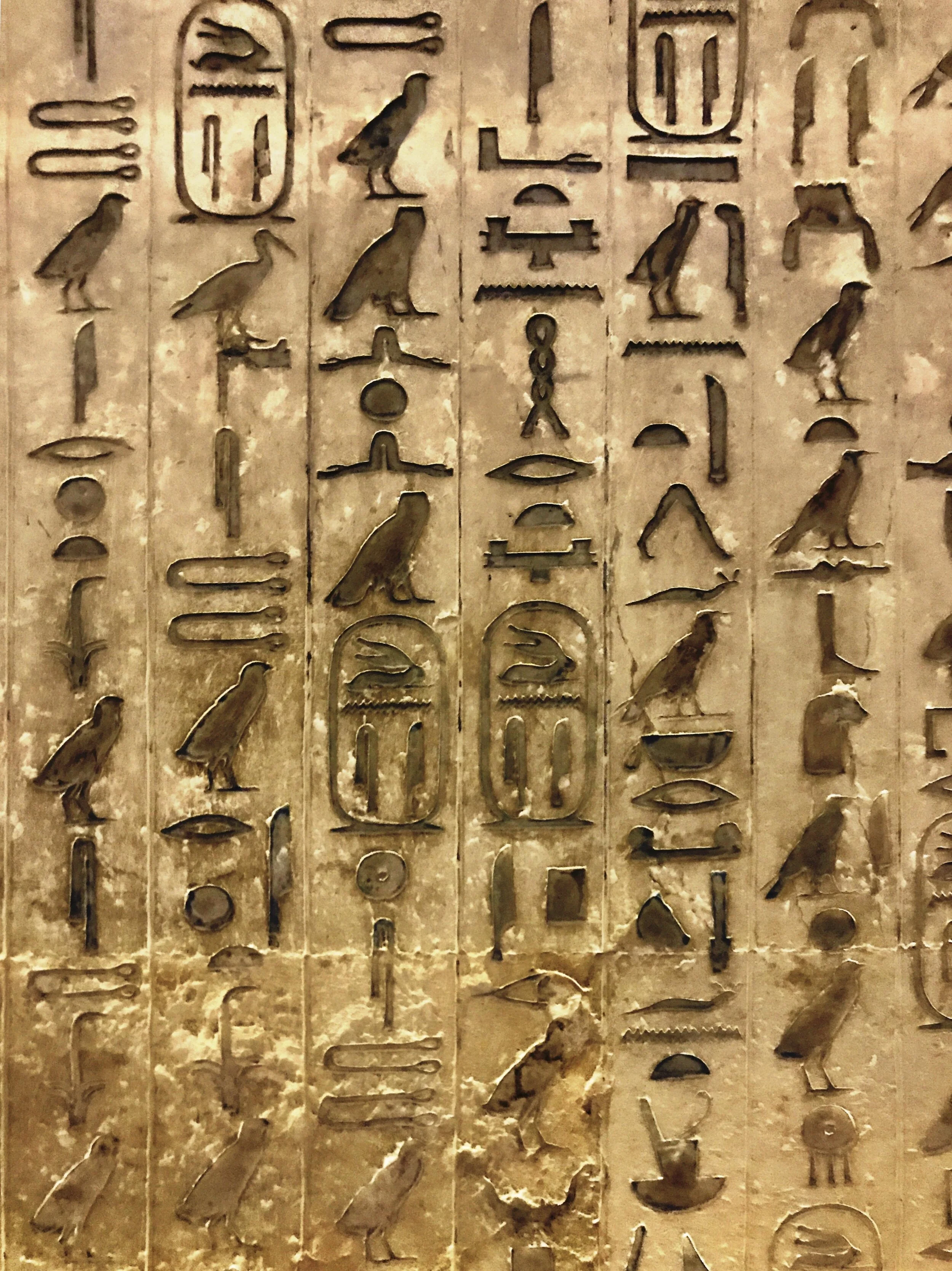Duality defines Freyja, the Norse goddess of love and war, beauty and death. She’s also a powerful sorceress, wielding seid — magic tied to fate, transformation and prophecy.
Duke and I adopted a cat from a shelter named Freya — and quickly fell under her spell. I was always more of a Greek and Roman mythology buff than Norse, so my curiosity was piqued — I wanted to know more about the goddess our new kitty was named after. I dove into learning about the goddess, and it soon became clear that our Freya is every bit as beautiful, fierce and wild as her divine namesake, with both embodying a blend of grace, power and an untamed spirit.
Freyja (as it’s most commonly spelled), the Norse goddess of love, beauty, war and magic, both captivates and unnerves.
“Freyja stands as one of the most captivating figures in Norse mythology — a goddess of dualities who embodies beauty and ferocity, love and war, magic and mystery. ”
What Does Freyja Look Like?
She’s draped in a cloak of falcon feathers, shimmering with the colors of the sunrise — golden and russet hues that catch the light as she moves.
Her hair, long and flowing like streams of molten amber, contrasts with eyes that seem to hold the mysteries of the cosmos.
Adorning her neck is Brísingamen, the legendary necklace forged by dwarves in the depths of the Earth. (See the full myth of the necklace below, in which Freyja whores herself out to dwarves.)
Freyja’s Chariot
She commands a chariot drawn by two formidable big cats. These silver-furred creatures, known as Bygul and Trjegul, glide with the grace of wild predators, their eyes glowing with the sharp intelligence and cunning of the goddess they serve.
The chariot moves as if weightless, whether it glides across the earth or soars through the sky.
The Origin of Freyja
Back when the cosmos were still untamed, swirling in chaotic mists and shadows, the Vanir emerged from this primal void — gods and goddesses intrinsically tied to nature’s cycles, ancient and wild. Among them was Freyja, born of the sea god Njörðr and sister to Freyr.
But Freyja’s birth was unlike any other — rumor has it that she emerged from the crashing waves, fully grown, as the saltwater mixed with the dawn’s first light, setting her hair aglow with a golden sheen. (Sounds quite a bit like Aphrodite, doesn’t it?)
From the very start, Freyja carried a duality within her: a grace that could soothe even the most troubled hearts, and a ferocity that could shake the heavens.
As she grew, her allure was unmatched, yet it was her wisdom in seiðr, the mysterious Norse magic, that truly set her apart. It was said that she could weave the very threads of fate, bend reality to her will and command the elements themselves. Her presence could sway the tides of war, and her tears, when shed, turned into precious amber, glittering tokens of her sorrow and joy.
The Vanir, Freyja’s original tribe, went to war with the Æsir in a conflict that shook the Nine Realms. To establish peace, Freyja played a key role as a mediator. As part of the truce, the Vanir sent Freyja and her family to live with the Æsir — a gesture that underscored her immense value and the high stakes of the agreement.
She craved adventure, adored beautiful things and was never afraid to wield her formidable powers to get what she wanted. This was a goddess who is as multifaceted as the jewels she wears — beautiful and fearsome, compassionate and unyielding, with a touch of mischievous charm. Just like our cat.
Goddess of Love and War
Freyja is a goddess of dualities, straddling seemingly opposing forces with effortless grace. She’s most commonly associated with love, beauty and fertility, but she’s far from a simple goddess of romance. Freyja’s love is fierce and complex, reflecting both the sweetness of new beginnings and the passion that can lead to conflict and heartache.
Her beauty is more than skin deep, tied to the power she wields and the control she exercises over those who desire her favor. Her role in fertility isn’t just about the growth of crops or even the bearing of children — it’s about the vital force of life itself, the energy that sustains both the Earth and its people.
But Freya’s also a goddess of war, presiding over the battlefield in a role similar to that of Odin. Half of those who die in battle are claimed by Freyja, who takes them to her hall, Fólkvangr, while the other half go to Valhalla. This dual role reflects the Norse view of death, where even in war, the concepts of love, honor and sacrifice are deeply intertwined. Freyja’s warriors are chosen not just for their valor but for the passion with which they lived and fought.
Freyja’s power also extends into the realm of magic, specifically seiðr — a type of Norse sorcery associated with fate, transformation and prophecy. She’s said to have taught this art to Odin, a significant detail that underscores her mastery of one of the most feared and revered practices in Norse culture. Seiðr allowed her to manipulate the threads of destiny, control the elements and see into the future, making her both respected and dreaded.
Freyja’s Symbols and Associations
Freyja’s symbols further reflect her complex nature. Brísingamen, her radiant necklace, is a source of power and authority. The cats that draw her chariot embody her independence and mystery, as felines have long been associated with both sensuality and cunning. Her falcon cloak, which allows her to take the form of a bird and fly, represents her ability to traverse the boundaries between worlds — between life and death, love and war, magic and reality.
Finally, Freyja’s association with gold and amber, symbolized by the tears she sheds for her missing husband, ties her to the earth’s treasures. These tears, said to be found along the shores of rivers and forests, show how deeply her emotions are connected to the natural world.
Freyja’s domains make her one of the most complex figures in Norse mythology — her influence extends across all realms, and through her associations, we see a goddess who embodies the full spectrum of human and divine experience.
Freyja’s Necklace, Brísingamen
It’s a masterpiece of craftsmanship — each link in the chain engraved with ancient runes of power and protection, glowing with an otherworldly radiance. Inset with gemstones that flicker between deep amber and blood-red, it pulses in time with Freyja’s heartbeat, amplifying her beauty and authority, making even gods and giants bow in awe. And like any good Norse artifact, it has its own name: Brísingamen.
The tale of how Freyja came to possess Brísingamen is a perfect blend of ambition, desire and a touch of scandal — exactly the kind of tale you’d expect from the goddess of love and war.
One evening, Freyja was wandering through the forests of Midgard when her eye caught the glimmer of something extraordinary: a necklace unlike any she had ever seen. It was Brísingamen, forged by four dwarves deep within the earth, and it shone with a brilliance that rivaled the stars. Instantly captivated, Freyja knew she had to have it. But dwarves are a tricky bunch — they aren’t easily bribed with gold or treasures. No, these craftsmen had something else in mind.
When Freyja approached them, the dwarves, grinning slyly, made their offer: sleep with each of them, and the necklace would be hers. Now, Freyja isn’t one to shy away from a deal — especially when something as dazzling as Brísingamen is at stake. She weighed her options, considered the price, and agreed. The deal was struck, she had sex with each dwarf in turn — and the necklace was hers, glittering proudly around her neck.
But not everyone was thrilled by Freyja’s deal.
Loki, the trouble-making trickster, caught wind of the arrangement and couldn’t resist stirring up trouble. He went straight to Odin, gleefully spilling the beans about how Freyja had “negotiated” for her new accessory. Odin was outraged and demanded the necklace be taken from her as a lesson in humility.
Loki, always ready to stir the pot, snuck into Freyja’s hall, slipped past her defenses and stole Brísingamen right from under her nose. When Freyja discovered the theft, she didn’t take it lightly. She stormed into Asgard, confronting Odin with a fury that shook the heavens.
Odin decreed that if Freyja wanted her precious necklace back, she would have to incite a war. And even if Freyja wasn’t particularly keen on Odin’s terms, she knew she wasn’t walking away from Brísingamen.
Now, how to start a war? Freyja took a surprisingly subtle approach. She traveled through villages and courts, planting seeds of jealousy, rivalry and greed. Her whispers acted like a slow poison, and soon, those tiny sparks of discord ignited into flames. Neighbor turned against neighbor, tribes clashed over petty slights, and kings sought expansion through conquest. War was declared, and Freyja got her necklace back.
Freyja and Thor’s Hammer
In another myth, Thor woke up one day to find that his beloved hammer, Mjölnir, had vanished. Now, losing Mjölnir isn’t like misplacing your car keys — it’s a catastrophic event that leaves Asgard vulnerable to all sorts of enemies.
As Thor fumed and threatened to smash anything in sight, Loki (who else?) volunteered to investigate. Using his usual cunning, Loki discovered that the hammer had been stolen by Thrym, a giant with a particularly thick skull and a bad case of greed. Thrym wasn’t interested in riches or glory, though — he had his eyes set on something far more valuable: Freyja.
Thrym sent a message to the gods: “You want the hammer back? Fine, but I want Freyja as my bride in exchange.”
When Freyja heard the demand, her face turned scarlet, her eyes blazed, and she unleashed a roar so powerful that it caused the very foundations of Asgard to tremble.
“Do you really think I’d let myself be bartered off like some prize cow?” she thundered, sending all the gods scrambling for cover.
With Freyja’s refusal made perfectly clear, the gods had to get creative. They hatched a hairbrained plan that could only work in the world of Norse mythology: Thor would disguise himself as Freyja and trick Thrym into giving back Mjölnir.
So there he was — Thor, the mighty god of thunder, his bulging muscles squeezed into a bridal gown, wearing a veil that barely concealed his thick beard. Loki, never one to miss out on a prank, gleefully played the role of Thor’s maid of honor and accompanied him to Thrym’s hall.
When Thrym saw his “bride,” he was thrilled — though a little confused by Freyja’s sudden appetite, as she devoured platter after platter of food and drained barrels of ale in one sitting. Loki, quick on his feet, explained that Freyja hadn’t eaten in days, out of excitement for her wedding. Dim-witted Thrym was sold and brought out the hammer as part of the wedding ceremony.
The moment Mjölnir was placed in “Freyja’s” lap, the charade was over. Thor ripped off his veil, seized the hammer, and with a single swing, sent Thrym and his cronies flying. The feast turned into a battlefield, with Thor gleefully smashing his way through the giant’s hall while Loki cackled in the background.
The gods returned to Asgard victorious, hammer in hand and no bride sacrificed. And Freyja? She watched the whole spectacle from afar with an amused smirk.
Freyja as the Price of Asgard’s Defences
As we have seen, Freyja’s beauty and allure were legendary, which made her a target for unwanted attention — particularly from giants, who always seemed to be scheming for ways to get their hands on her. One such tale involves a giant who came to Asgard with an offer the gods couldn’t refuse…or so he thought.
The giant approached the gods with a bold proposition: He would build a wall around Asgard strong enough to keep out any enemy — an impenetrable fortress that could withstand even the fiercest of attacks. In return, he demanded three things: the sun, the moon and — most importantly — Freyja as his bride. Now, the gods weren’t exactly thrilled about the idea of losing the sun and moon, but the thought of handing over Freyja? Unthinkable.
Still, they figured they could outsmart the giant. After all, he was offering a monumental task, and they were confident that no one could complete such a project in the tight deadline they’d impose. The gods agreed to the deal but insisted that the wall had to be finished within a single season. Thinking they’d bought themselves an easy win, they relaxed…until the giant started making serious progress.
What they hadn’t anticipated was that the giant had a secret weapon: his powerful stallion, Svadilfari, who was hauling massive stones at lightning speed. As the deadline drew near, the gods realized they were in deep trouble. Freyja, fuming at the thought of being handed over like a prize, made it clear that if this deal went south, heads would roll. Literally.
Desperate for a solution, the gods turned to Loki, the trickster they could always count on for a scheme, however unconventional.
Loki didn’t disappoint. “Leave it to me,” he said with a sly grin, already hatching a plan.
That night, under the cover of darkness, Loki transformed himself into a sleek, graceful mare. His shimmering coat caught the moonlight as he trotted toward Svadilfari, the giant’s powerful stallion, who was tirelessly hauling massive stones for the wall.
Svadilfari, enchanted by the sight of this new and alluring horse, immediately lost interest in his work. Loki, in mare form, whinnied coyly, flicked his tail, and galloped into the forest. The stallion, spellbound, followed without hesitation.
What happened in the woods isn’t certain, but let’s just say Loki as a mare was just a bit too entrancing. He ended up pregnant and gave birth to Sleipnir, an extraordinary eight-legged horse with unmatched speed and strength. Sleipnir would go on to become Odin’s trusted steed, capable of crossing realms and outrunning the wind itself.
Meanwhile, with the horse gone, the giant’s progress slowed to a crawl.
Enraged and realizing he’d been duped, the giant revealed his true form. It was terrifying to behold: His once humanoid features twisted and expanded, his body swelling to an immense size. His skin turned a dark, stony gray, cracked and weathered like ancient rock, with jagged ridges jutting from his shoulders and spine. His eyes burned like molten lava, seething with fury, and his hands became massive, clawed appendages capable of crushing stone. Veins of fiery red pulsed across his body, as if his rage was fueling him from within, and his voice thundered like an earthquake as he roared his fury, shaking the very ground beneath him.
But before he could make a move, Thor swooped in and took care of the problem the way he usually does — with a swift blow from Mjölnir, turning the giant into rubble. Crisis averted, the gods celebrated, and Freyja remained free, much to her relief.
Óðr, Freyja’s Wandering Husband
Freyja is married to Óðr (pronounced “Oh-thur”), a figure shrouded in mystery. His identity has long been debated by scholars. Some suggest that he’s another aspect of Odin, given the similarity in their names and roles as wanderers. If that’s true, it would make Freyja and Frigg — Odin’s wife, and a wise, reserved goddess of domestic life — two sides of the same coin, representing different aspects of a single goddess.
Óðr, a mysterious figure even by Norse standards, was known for his wanderlust. For reasons unknown, he left Freyja, vanishing into the far reaches of the world. Heartbroken but determined, Freyja set out on a relentless quest to find him, traveling through every corner of the Nine Realms.
In her search, Freyja disguised herself many times, using her falcon cloak to fly over mountains, seas and distant lands. Her journey took her through realms of both gods and mortals, and wherever she went, she asked after Óðr. Yet her search was filled with more questions than answers, and with every door she knocked on, the trail seemed to grow colder. As the days turned into months and the months into years, Freyja’s sorrow became legendary.
The tears she shed in her search turned into shimmering gold or amber as they hit the ground. These tears were found scattered across forests and shores, becoming treasured jewels sought after by mortals and gods alike. Even in her despair, Freyja’s presence brought beauty into the world, a fitting symbol for a goddess whose love and pain are intertwined.
Despite the depth of her love and the lengths she went to, Freyja’s search for Óðr was ultimately fruitless. Whether he ever returned or remained lost to her, the myths don’t say clearly. What they do tell us, though, is that Freyja’s longing became a part of who she is: a goddess who, despite her formidable powers and fierce independence, knows the sting of loss. It’s this complexity that makes Freyja one of the most relatable figures in Norse mythology. She’s both the mighty goddess who commands the battlefield and the grieving wife searching for the one she loves.
Interestingly, despite her marriage, Freyja remains a goddess whose love is sought after by many. Giants, gods and dwarves alike have tried to win her hand or bargain for her favor. Yet, even when she strikes deals, it’s always on her terms, showcasing her autonomy and power within relationships. Whether she’s using her beauty to achieve her goals or fiercely guarding what she holds dear, Freyja’s never reduced to just a love interest.
The tale of Freyja’s search for her lost husband, Óðr, is one of longing, resilience, and the deep, bittersweet love that lies at the heart of her myth. Unlike the larger-than-life battles or witty escapades of other gods, this story reveals a more poignant side of the fierce goddess, one that resonates with the universal pain of losing someone dear.
Freyja, Goddess of Dualities
Freyja stands as one of the most captivating figures in Norse mythology — a goddess of dualities who embodies beauty and ferocity, love and war, magic and mystery. Her stories remind us that power comes in many forms: the strength to fight, the wisdom to weave destiny, and the resilience to seek what’s lost. Much like our own Freya, who prowls the house with a mix of wild grace and playful charm, the goddess Freyja continues to enchant and inspire. –Wally


